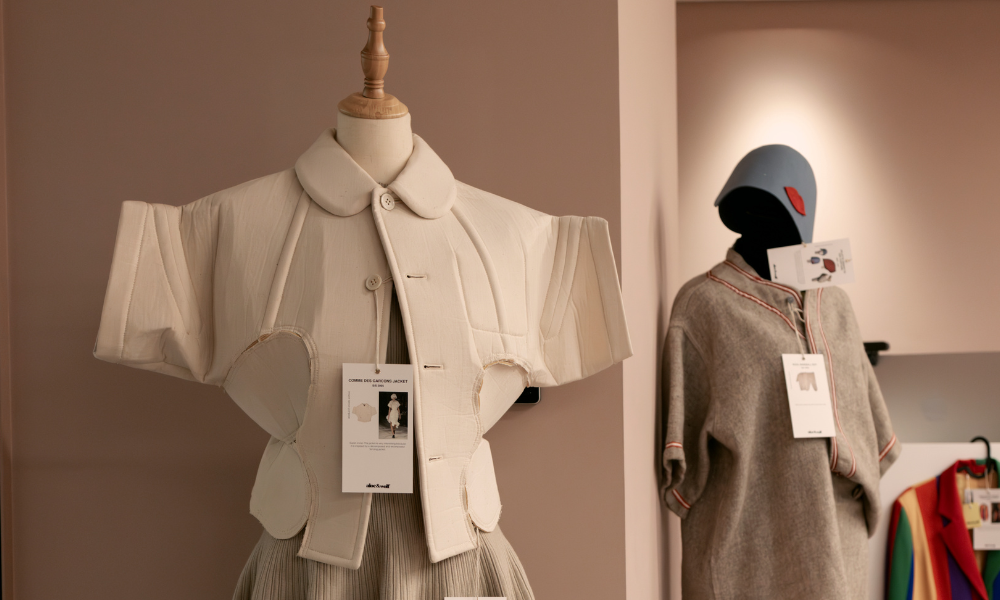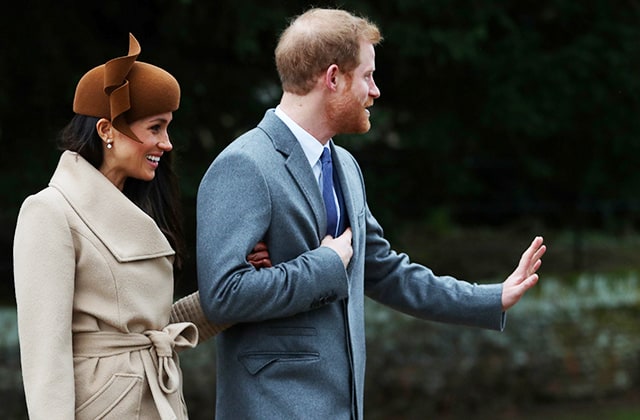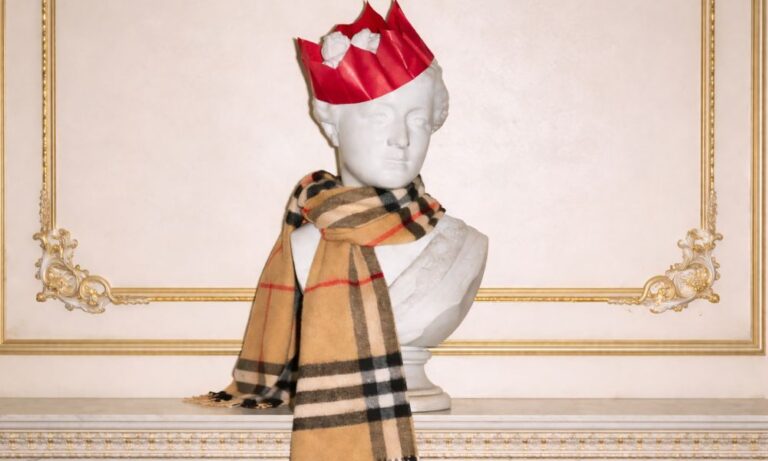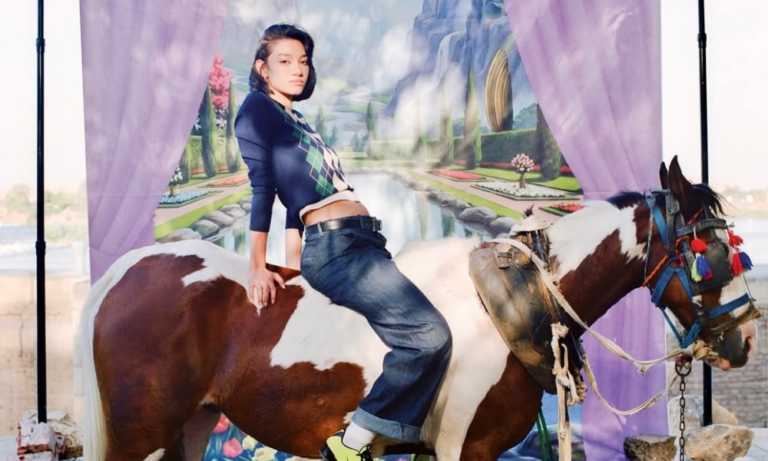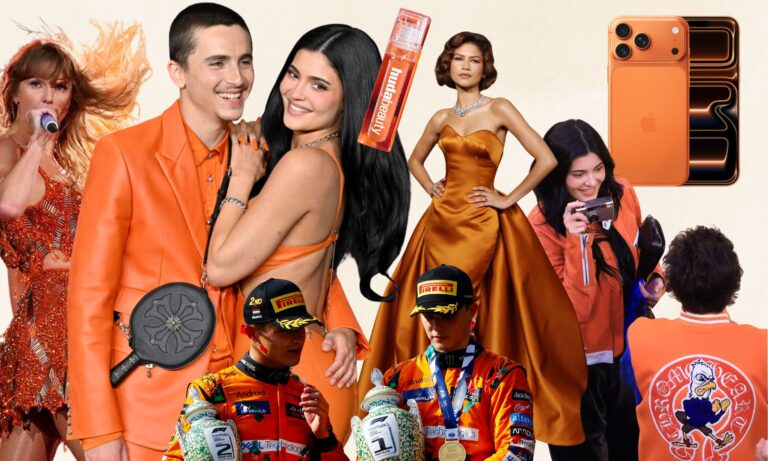Istituto Marangoni Dubai recently hosted an event titled ‘Vintage: Why the Future of Fashion is in the Past’ with Alessandra Aloe, Founder of aloe&wolf, and Elena Marinoni, Director of Education at the institute, leading the discussion. Moderated by Sujata Assomull and Roberto La Iacona, the event emphasized the role of vintage fashion as a source of inspiration for new designers and highlighted the importance of sustainable reuse.
The showcase featured exclusive pieces from aloe&wolf’s collection, including an Alaïa super tricot suit (2008), a Comme des Garçons jacket from SS 2005, and an Alexander McQueen FW 1999 tuxedo. These iconic pieces, showcased for the first time in the region, exemplify the timeless appeal of vintage fashion. Alessandra Aloe, through aloe&wolf, has curated a renowned collection over the past 20 years in Tuscany, attracting stylists, collectors, and celebrities worldwide. The brand is dedicated to preserving the essence of fashion and capturing enduring style trends.
Now tell us, why the future of fashion is in the past?
Elena Marinoni: Unearthing the future of fashion invariably leads us back to the past, albeit always with a refreshed perspective. This timeless cycle seems to persist, intermittently intersected by bursts of breakthrough innovation and subverted norms. Nevertheless, the fashion world hence tends to apply a modern twist on previous styles, creating an aesthetic that both honors and reinvents and questions. Consider the growing trend of “Post Irony Fashion” – a nascent movement that burrows into the archives of style, brushing the dust off dated trends, and reintegrating them into the contemporary fashion landscape. It’s a nod to the past streamlining through the lenses of modern design sensibilities and a playful defiance of prevailing norms.
Elena, how are you supporting education and awareness in Dubai on vintage fashion?
Elena Marinoni: At Istituto Marangoni Dubai we strive to empower a new generation of talents and we encourage them to embrace a conscious approach to fashion and creativity, and for them learning about vintage fashion and the importance of fashion brands archives is part of this approach. For the same reason, we have also integrated in our curricula subjects that cover the entire spectrum of conscious fashion: such as fundamentals of sustainability in design, sustainable materials and manufacturing processes, 3D modelling for virtual fashion, sustainable business models for the fashion industry such as the “made to order” approach or recommerce or upcycling.
Can you name few re-commerce websites you use or advice to use in the region?
Elena Marinoni: Endless, Reems Closet, Retold.
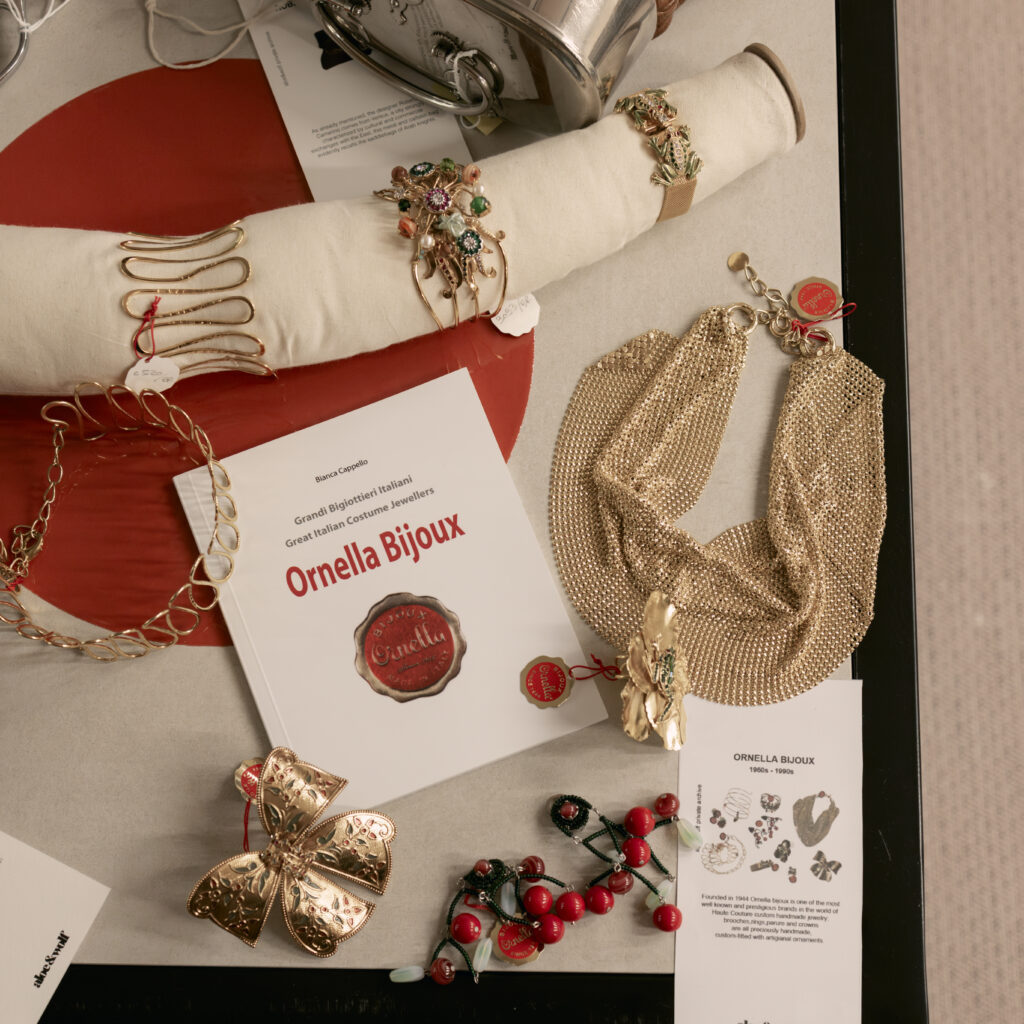
Why do you enjoy vintage shopping? And what can you advise other consumers to follow lead?
Alessandra Aloe: Vintage isn’t just shopping, you can start your collection of vintage pieces by rummaging through our parents’ or grandparents’ wardrobes. In my research I find unique pieces often made with materials and high-end artisanal techniques and I always learn new things and the more I go on the more I become passionate about them. The best advice would be to buy little and well and be moved by the garments and objects we would like to buy and, if possible, try to get to know their story. Another piece of advice for those who want to get closer to this world is to study, watch old films, visit fashion exhibitions, go to flea markets.
Can you share your favorite vintage shopping find and the story behind it? Can you name few vintage gems you visited worldwide?
Alessandra Aloe: My favorite vintage piece was exhibited at the Istituto Marangoni Dubai during the panel dedicated to the Vintage world. It is a 70s skirt by the American designer Malcom Starr which always excites me because it is entirely made with patchwork technique and represents circus animals: it brings me memories of my daughter, when she was little she would lie down under this skirt – which was gigantic for her -and fantasize about drawing animals. In this story there is everything that fascinates me about vintage: the fact that it can tell stories and make us dream. Among my favorite places there is certainly the Sant Ouen flea market in Paris and Porta Portese in Rome, or the Pugliano market in Naples, where I could spend hours without realizing it, getting lost among furniture, buttons, laces, incredible clothes and old photos. In every city I go to I always look for the monthly or weekly flea markets.
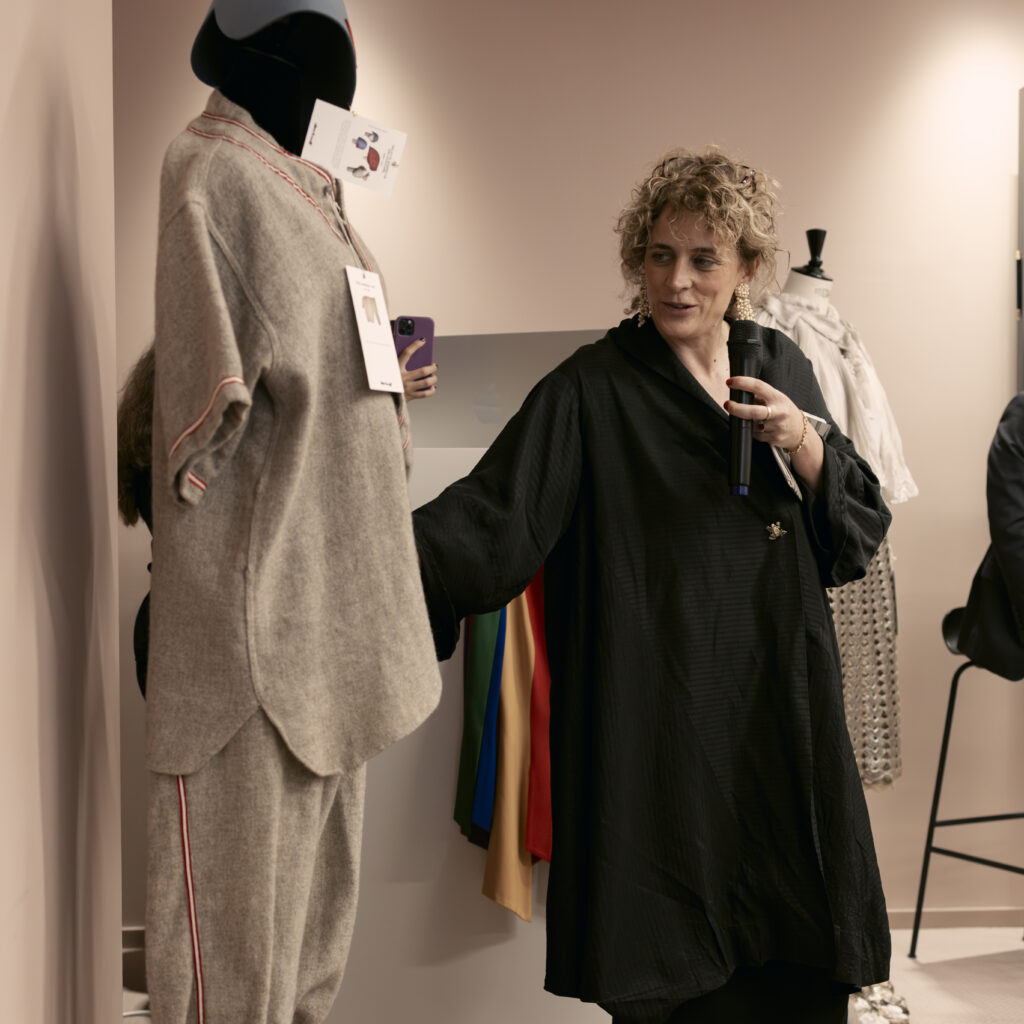
What are the environmental benefits of choosing vintage and second-hand items over buying new?
Alessandra Aloe: First of all, we must make the distinction between vintage and second hand. Vintage is an object that is more than twenty years old and acquires value over time, second-hand is everything that is put back into circulation and reused, this also applies to fast-fashion items that have no value and are made with polluting processes and toxic materials. Although recycling is a fundamental part of the sustainable and ecological way of life, we must be careful not to get carried away by the bargain effect and buy too much, because by doing so we continue to put into circulation and buy items that we end up using once or twice and which then end up in the garbage or which we put back into circulation perhaps by selling them online and continuing to pollute. I firmly believe that for a truly sustainable lifestyle we must start buying only what we need or what makes our heart beat.
How can one incorporate vintage pieces into a modern wardrobe seamlessly?
Alessandra Aloe: Adding vintage accessories such as brooches, glasses, scarves, hats or bags to a contemporary outfit, vice-versa playing with vintage clothes and contemporary accessories is a very fun and creative exercise in style that certainly makes us more unique.
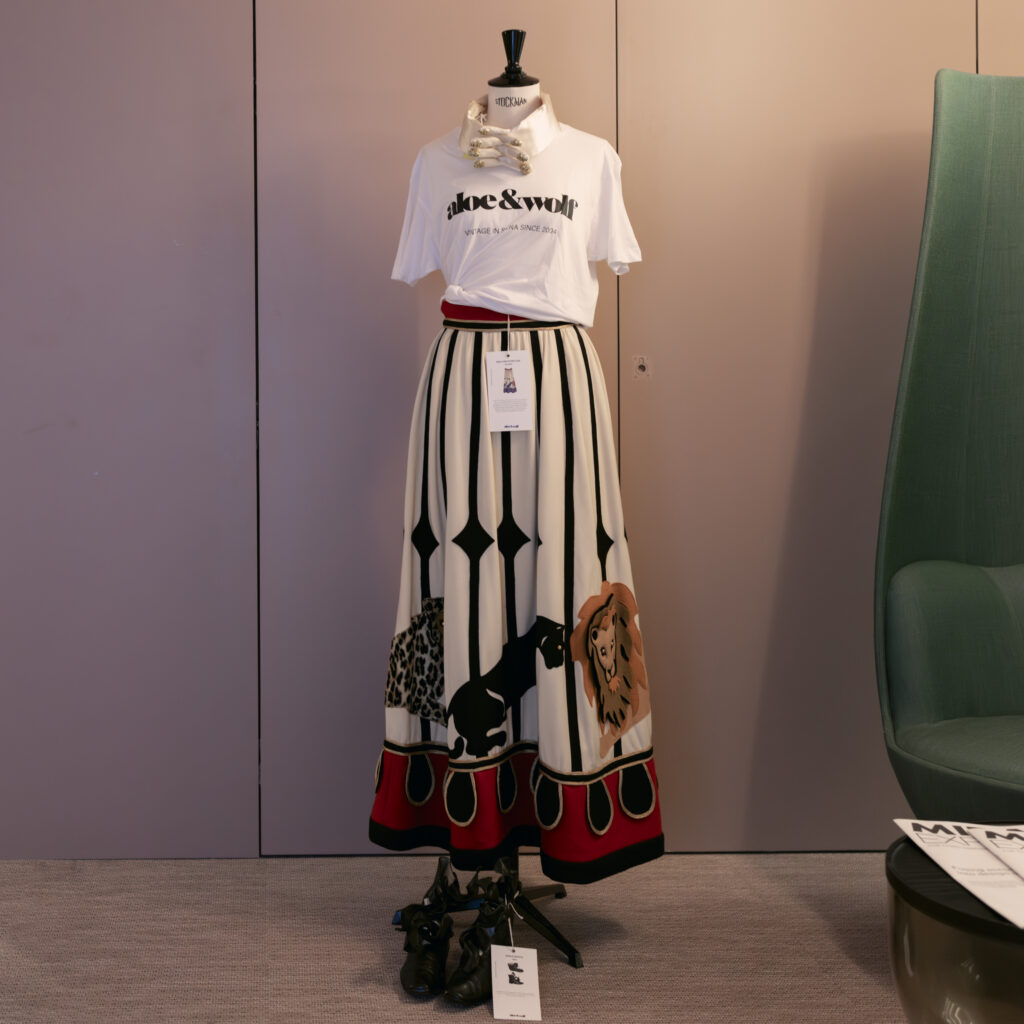
What are some common challenges or misconceptions people may have when it comes to vintage shopping?
Alessandra Aloe: I think it’s limiting to think of vintage only in terms of branded accessories and designer clothes. In our world you can often find beautiful haute couture dresses, bags and outerwear made to measure by hand in the 40s/50s/60s which are of immense beauty and value, but don’t carry a recognized brand. It is very interesting when we see the younger ones – who perhaps until recently devoured fats fashion – to become passionate about vintage because they start understanding fabrics and cuts, appreciating the quality and not the quantity, discovering craftsmanship and uniqueness, and also aiming to create their own style to stand out. One day a gentleman who worked in the world of large conferences on ecology and sustainability paid me a wonderful compliment, he said that with my caring for and displaying beautiful garments I was helping people to better appreciate the beautiful things forgotten in the wardrobes and to put them back into circulation. Well many years have passed, but this compliment is still heart-warming to me.
ALSO READ: WORLD, MEET PHARRELL WILLIAMS’S FIRST LOUIS VUITTON PRE-COLLECTION.
